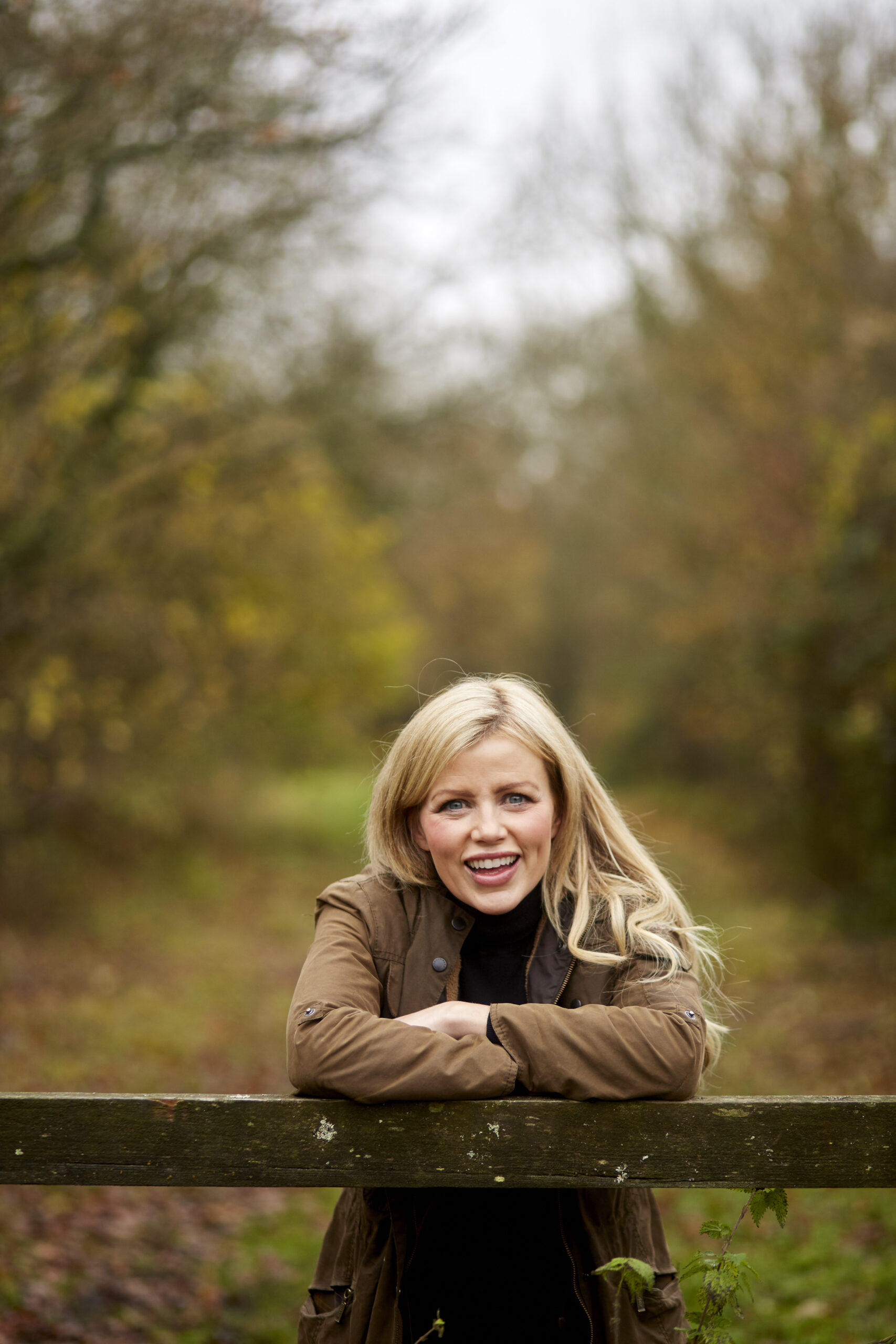When holiday guides and travel PR gurus spool through the Cotswold honey-coloured-stone rhetoric, I get the same sinking feeling as seeing tourists dining in hotspot steak eateries in London. Please don’t spend your money on that. That’s not the authentic, living, real-world of the place. That’s the shouty part that wants your cash.
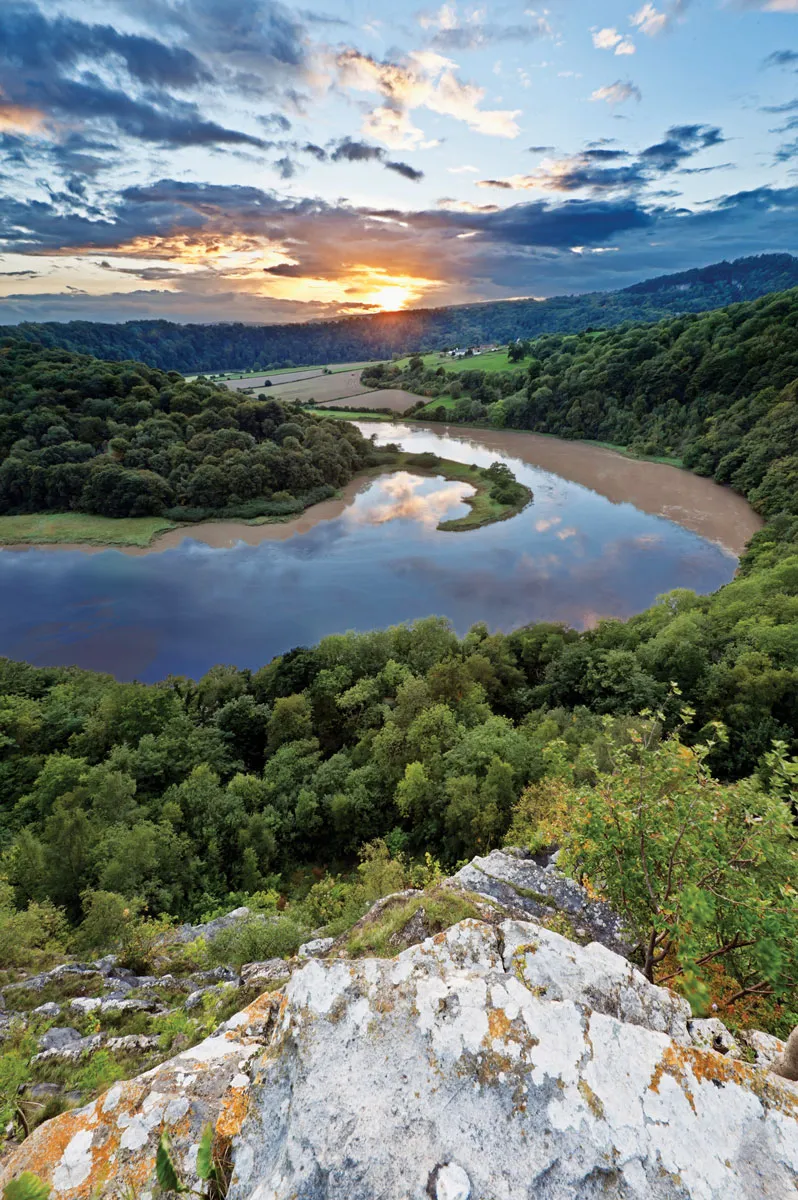
Sure, the stone has a yellow tone that fires up the Farrow & Ball-types (it’s more of a grey in the south of the region, which also fires up the Farrow & Ball-types), and indeed, that stone may tell a part of the history of the area as most building took place during the boom years of the wool trade. But it’s all relatively recent history, compared to the Cotswolds I’m going to show you: the natural history of this place, the geology, the prehistoric. This is a guide to the Wild Wolds (without the cots that penned the sheep) minus the gift-shops, the shiny clean 4x4s gliding over tarmac and without all the horses upon horses upon horses.
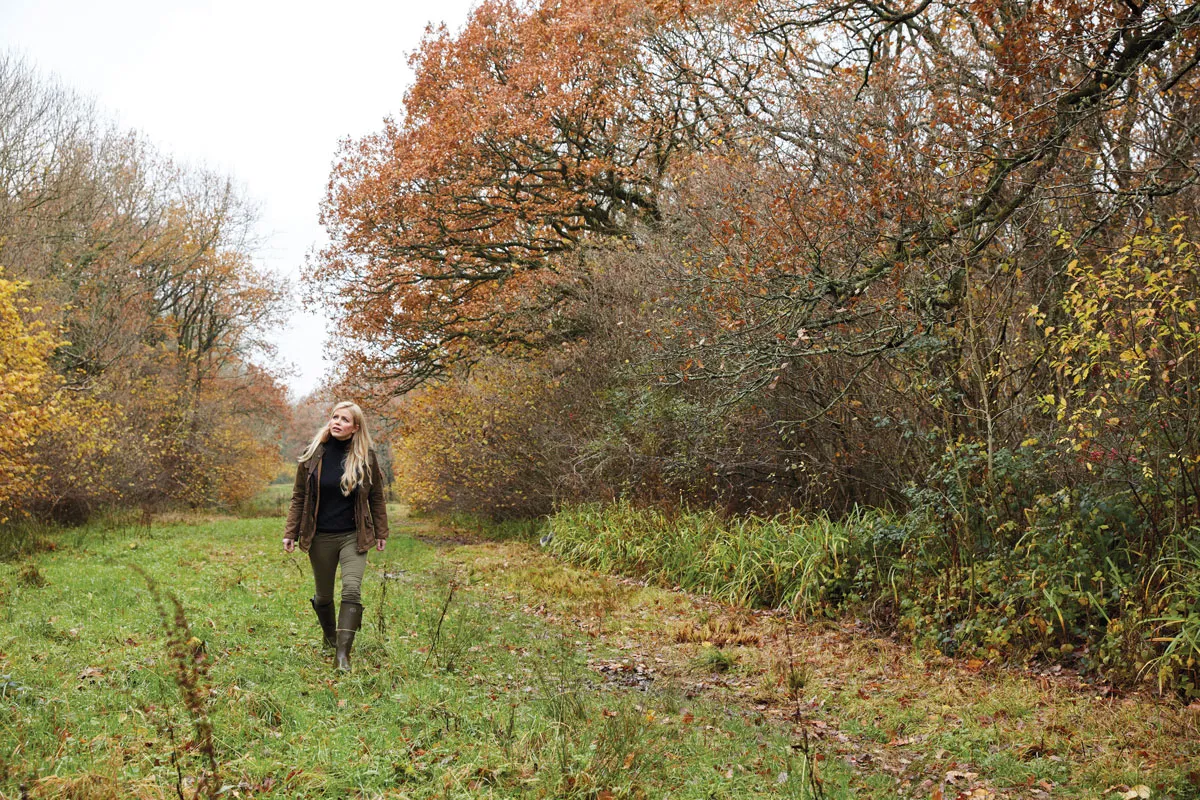
I know what you’re thinking. How wild can a place be if it doesn’t risk altitude sickness? Surely it’s fells, mountains and uplands that represent real wildness? A long time ago maybe, but as many now recognise, our uplands are disappointingly barren these days having been grazed to the quick. Granted, getting up high blows your hair right out of place and often affords you the chance to stomp around Heathcliff-style all alone and moody. But there’ll be plenty of that kind of free spirit in my guide, where the wind will make your ears ring and where your heartache will belong. As well as a
huge diversity of wildlife, the great yard stick of wildness.
Come with me now to the less-explored ‘other side of the river’; to gems on the mighty River Severn itself; and to the secret discoveries among the part of the Cotswolds that you thought you knew.
Walk on the wild side
Let’s start across the river with Lancaut and Ban-y-Gor. Here you can experience 30m cliff tops, intertidal mudflats and one of the four most important ancient woodlands in the country all within just a short walk. From on high there are fantastic views along the Wye Valley.
Star species include nesting peregrine falcons, ravens, sword-leaved helleborine, several species of endemic whitebeam plus common seals that occasionally travel up the river on the high tide. Taking on the steep gradients, rocky ground and boulder scree feels wild and lonely, but with reminders of its human past: lime kilns and a ruined chapel. It is also a British Mountaineering Council climbing site, so you can experience the full 3D wonder of this place and visit it time and time again, always with a new vantage point.
Woodland dreams
Lying 10 miles to the north are the realms of Puzzlewood, the ancient woods as conjured in the imaginations of Hollywood producers. There are gullies of moss-covered rocks, twisted yew tree roots and pathways hewn from the toils of hobbits. It’s even thought that Tolkien himself took inspiration from Puzzlewood to write about Middle Earth. The enchanting landscape was in fact created when uplifted cave systems were gradually exposed at the surface and the limestone was eroded, leaving interesting rock formations and the setting for folklore.
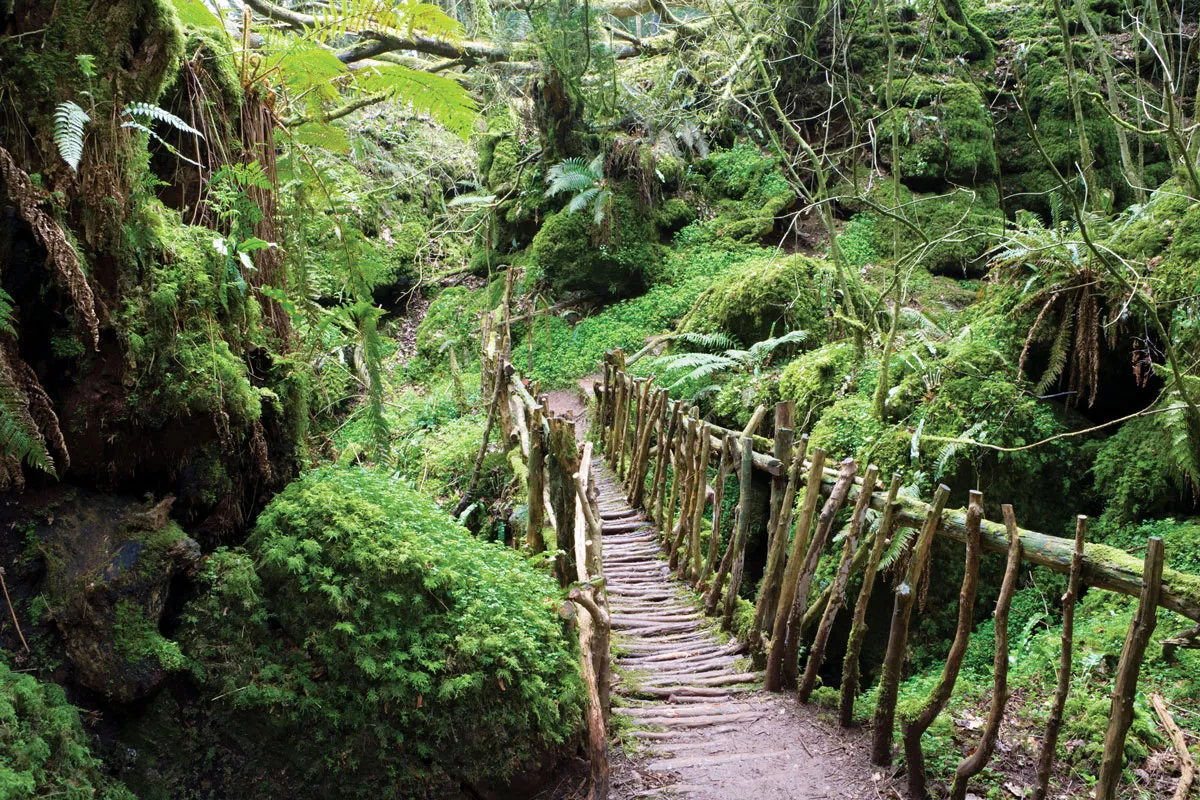
In the mid 1800s, workmen found a small cavity in the rocks after moving stone and discovered 3,000 Roman coins in earthenware jars. This is the place to come to sate today’s thirst for ye olde Britain – picture faery clans cloaked in ivy green velvet capes, pinned with elven brooches. A film-maker’s dream, it is here that the BBC’s Merlin and Atlantis were filmed – and the woods staged a scene in Star Wars: The Force Awakens.
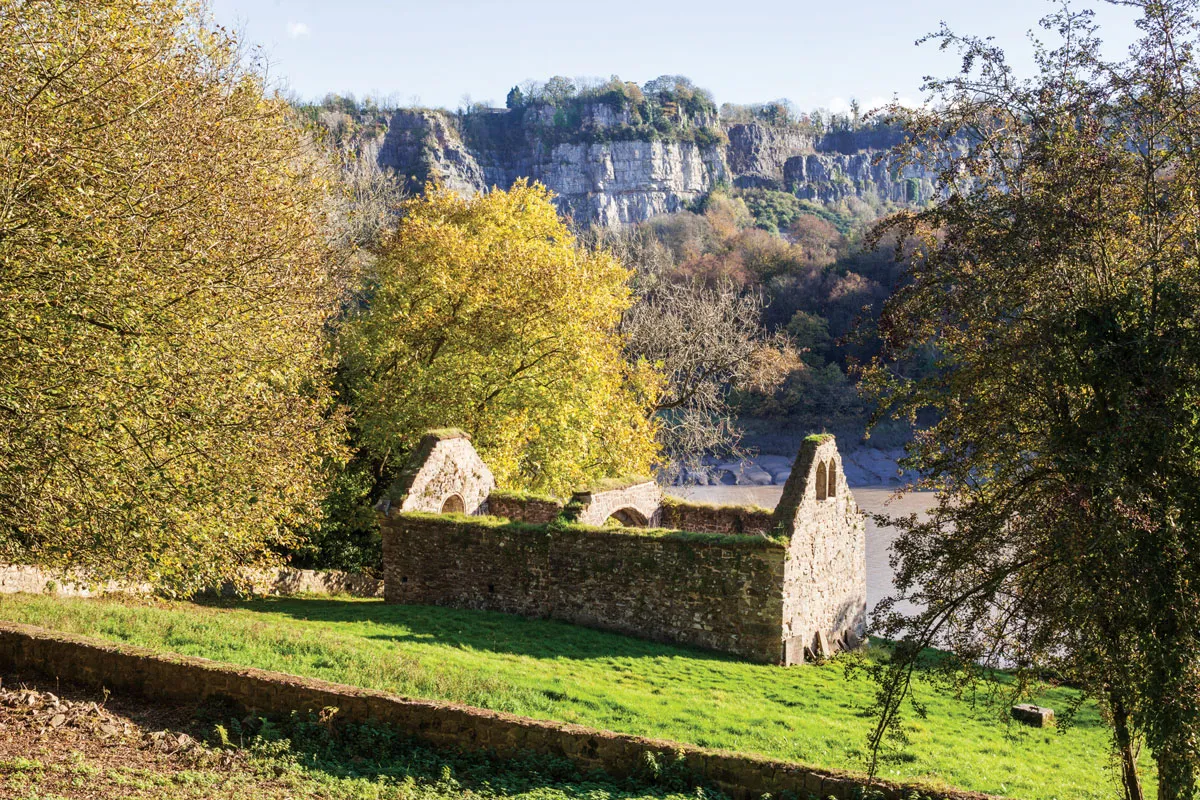
Onwards north-east, to Hope and Flaxley Woods. When these are deserted, you can stand still and enjoy a 360-degree soundscape of wild music: heart-filling and humbling birdsong.
Standing 15 miles north-east is May Hill, straddling Gloucestershire and Herefordshire. It is well known from afar by its tuft of pine trees on the top, planted to commemorate the golden jubilee of Queen Victoria. Fewer people get on up there, past the woodland cake, to the grassland icing on top and its evergreen summit cherry of Corsican pines, 300m up. This adornment on the very top is the only part that doesn’t belong to the National Trust and is instead registered as a village green. But you’ll find no cricket and cream teas here. May Hill provides the setting for wild May Day shenanigans that saw the place’s original name – Yartleton Hill – changed centuries ago, in recognition of its raucous festivities.
The rest of the year you can enjoy quiet blustery views across the Welsh borders, Cotswold Hills, the Black Mountains, Forest of Dean and the Severn Vale. The hill is grazed using commoners’ livestock but plenty of developing birch, oak and crab apple trees offer more homes for insects.
It is a great place to spot meadow pipits, tree pipits, redstarts, ravens and woodcocks.
We now move eastwards to this side of the river to enter Golden Valley. It’s thought that the quality of the light through the leaves of the beech woods, along the meandering valley and refracted through low hanging mist, is what gave the place its name. Generally good eggs hold the paperwork to the land – the Wildlife Trust, Woodland Trust and caring long-lived locals, who I’m pleased to call neighbours – all of whom want to keep this place wild. Year round, buzzards call, muntjac shout and tawny owls observe flexible hours. Noisy in the best way.
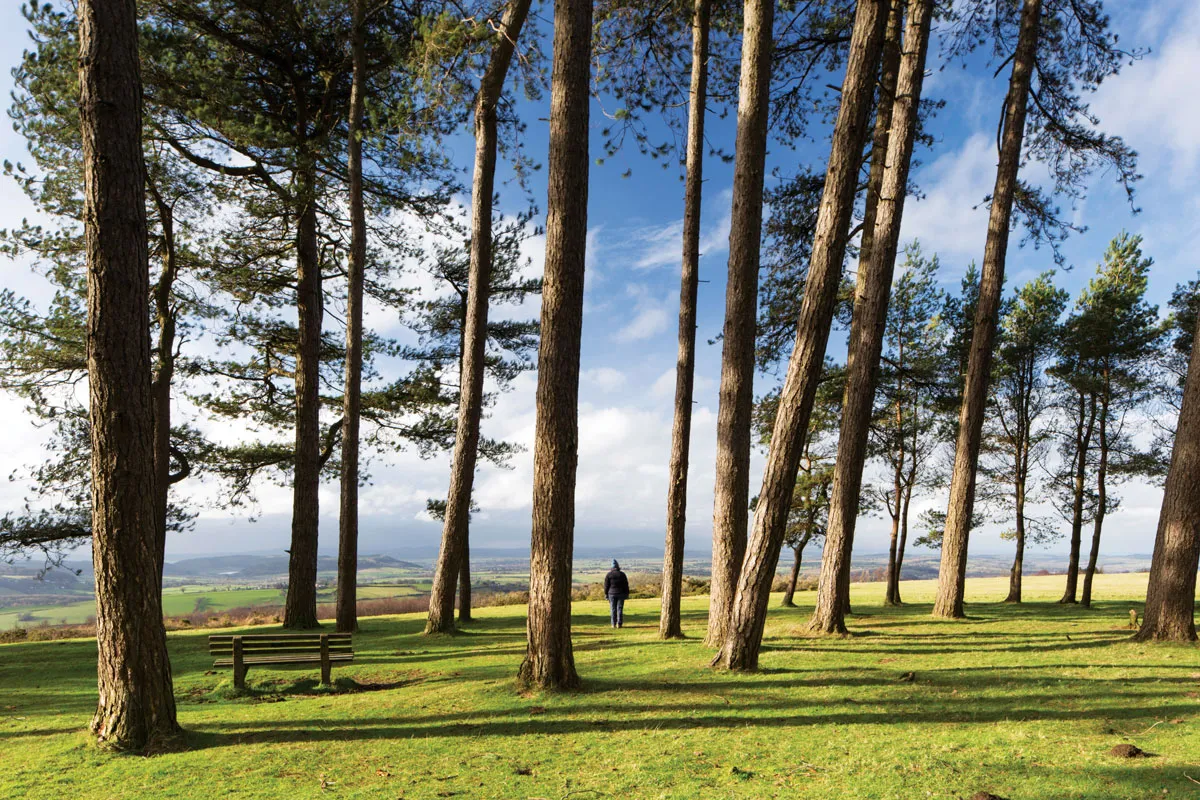
Love lee land
Snow’s Farm is a reserve of traditional Cotswold grassland near the village of Slad. There are slim chances of happening upon anybody else in this wild valley. It is Laurie Lee country, so enjoy the bucolic scenes he described. On a summer afternoon, come to read or wander by the Dillay Brook. Stay until dusk to watch roe, muntjac or fallow deer emerging from the woods.
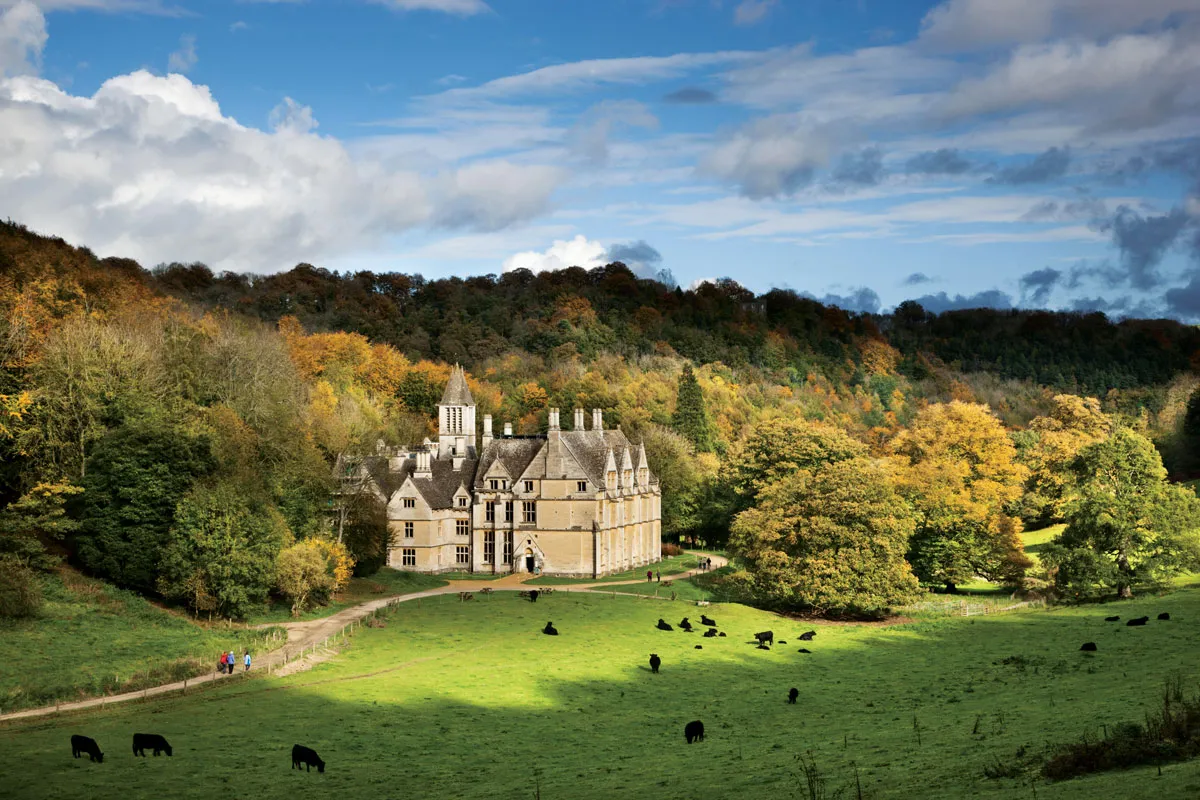
A little to the south-west, we discover Woodchester Mansion. The mystery and topography of the terrain that surrounds this old house makes it a chilling walk, even in the summer. For much of the year the sun is obscured by the steep-sided valley. There’s the oddly placed mansion in the depths of the landscape; the peculiarity of the building, abandoned midway through construction; and tales about people of the past taking their lives in the lakes. It all lends itself to the eerie atmosphere and the promise of a poetic time in the wild. I used to come here as a teen with friends, fuelled on fruit-flavoured ‘wine’, and we’d all pretend not to be frightened. A corvid’s croak is all that’s required to complete the experience.
Further south we trek to Lower Woods. At almost 272 hectares (670 acres), this ancient woodland is big, so it’s worth taking time to enjoy it. After walking some of the 62km of woodland paths, you can cool off in the fresh water of the Little Avon river. There are special orchids here, including the violet helleborine, bird’s-nest orchid and greater butterfly orchid. If that’s too niche to excite you, the charm of the nightingale and chance to see a goshawk should do the trick. The site has over 2,500 years of documented human history and is still managed using traditional techniques with nature in mind. You can even buy products from the resident green woodworker made of timber from the site, with all proceeds going to conservation.
Ghosts ships on guard
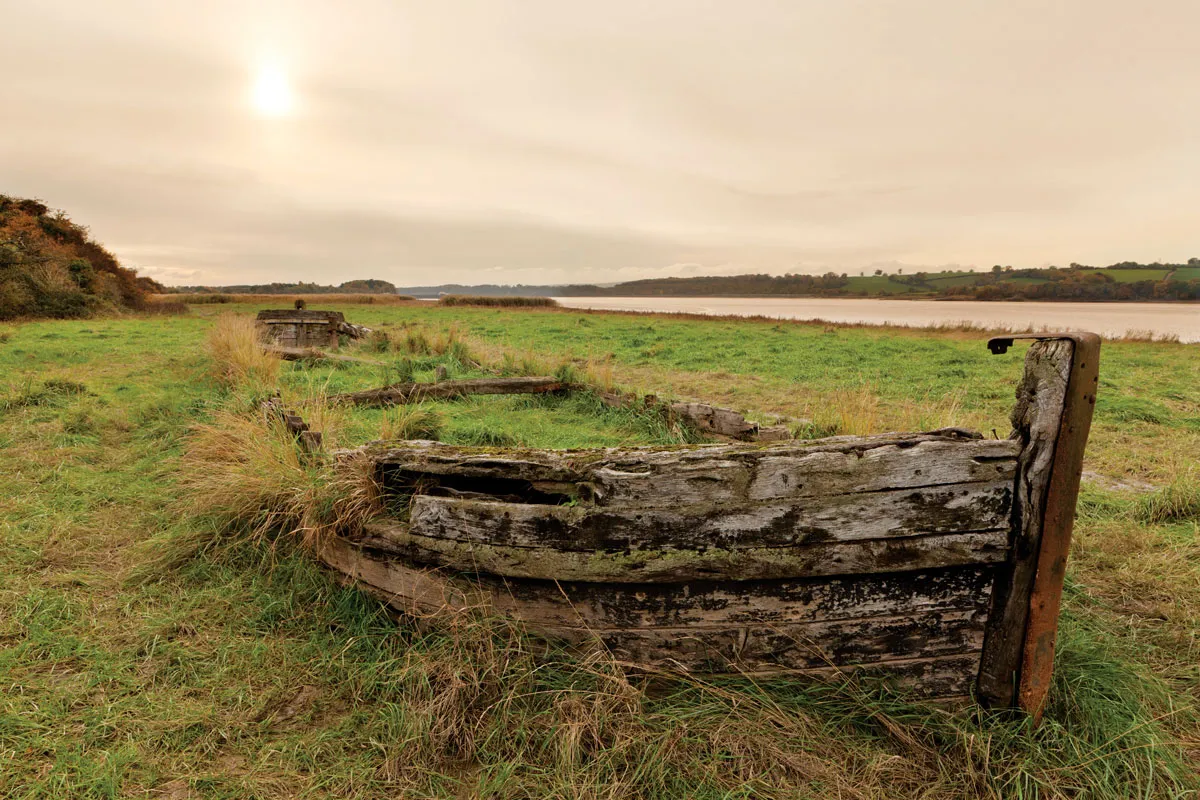
To explore the Severn itself, take an eerie walk around Purton Hulks, Britain’s largest ship graveyard. These were deliberately beached to reinforce the riverbank and protect the narrow strip of land between the river and adjacent canal. Each vessel was taken out of Sharpness Dock on a high tide, towed by tug towards shore and released so that it charged up the bank as far as possible. Holes were then knocked into the hull to allow water and silt inside. Archaeological investigations are being conducted to find out more about each vessel and many are now labelled. It’s worth looking online before heading there to make sense of the site. It’s a wild experience that takes effort, especially in the mud, but it’s worth it.
It will surprise you that some of the best fossil finds come from Gloucestershire. For today’s fossil treasures, you need to head to the tidal River Severn, which cleans a new surface for searching every day. With the brilliant paleontologist Dean Lomax,
I scoured the water’s edge at Arlingham with my children. We returned from our mudlarking with buckets of prehistoric treasures: bivalves, crinoids, Gryphaea and full stone pizzas of invertebrate life from millions of years ago. Mind boggling and joyful. Also an incredibly calming activity requiring mindful focus. Arlingham sits near Saul, inside a sharp meander in the river with handsome walks.
It’s not easy seeking out the wild. Not least because there isn’t that much of it, and we’re now expected to enjoy a view of it from the path. It’s even harder in an area which, when Googling ‘wild Cotswolds,’ produces the Wild Rabbit pub and the Cotswold Wildlife park as primary wild offerings. The value of finding wildness in our lives is beyond measure. It’s the green connection that fires up the brain. But it’s more than that: it’s the mental reach back to our ancestors whose lives depended on wild places; and it’s the spirit required to short-circuit modern hard-wiring, take that first step off the trail and forge our own paths through the land.
WHERE TO STAY
Barnsley House
This elegant country pile has sumptuous formal gardens and great local grub. Doubles from £200 a night. barnsleyhouse.com
The Dome Garden
Stay in one of 11 geodesic domes in a sunny Cotswolds garden, complete with chickens, rope swings and pizza oven. Sleeps four. From £454 for three nights. domegarden.co.uk
Thyme
This boutique hotel set in 150 acres of gardens and meadows boasts an on-site cookery school. Doubles from £270 a night. thyme.co.uk
CULTURAL KICKS
Gloucester Cathedral
Ancient walls and soaring ceilings – Gloucester Cathedral has been leaving visitors mesmerised for over 1,000 years. Admire its extraordinary architecture and beautiful medieval stained glass. gloucestercathedral.org.uk
Stroud Subscription Rooms
The chocolate box of the ‘Sub Rooms’, as it is known to locals, is home all manner of courses, talks and exhibitions. Or you could while away a morning at
Mr Twitchett’s resident Coffee House. subscriptionrooms.org.uk
PERFECT PUBS
The Daneway
Sitting squarely at the bottom of Golden Valley, The Daneway is surrounded on most sides by wild nature reserves. A wander in summer gives you the chance to spot newly emerged large blue butterflies on the wing, one of very few places in the country where they flourish. Much of the food on your plate is grown in the garden and I thoroughly approve of the Daneway’s G&Ts, served in handsome glassware. Sapperton, GL7 6LN
The Crown
Another beauty in Golden Valley is The Crown, a dream combination of pretty beer garden with a view for summer, with candles, fire and dogs allowed inside for winter. A 17th-century ‘cider house’ with 12 bedrooms for weary travellers, the Crown offers traditional home-cooked hearty fare. Blissfully, the menu doesn’t assume all vegetarians are happy with one goats cheese option. Frampton Mansell, GL6 8JG, thecrowninn-cotswolds.co.uk
Countryfile presenter Ellie Harrison is president of the Gloucestershire Wildlife Trust and loves exploring the wild lands around her Cotswold home.
